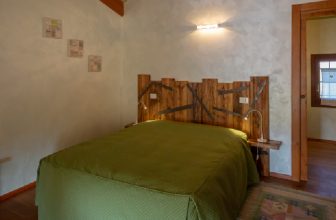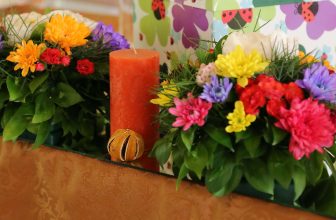How to Keep Inflatable Decorations Standing
Inflatable decorations have surged in popularity for home and commercial use, offering various designs from festive holiday figures to promotional inflatables for businesses. Their appeal lies in their eye-catching sizes and shapes, easy storing and transporting ability, and the instant atmosphere they create for any event or season.

The versatility of inflatable decorations in numerous themes and designs caters to almost any celebration, making them a ubiquitous sight during holidays and special events.
Understanding how to keep inflatable decorations standing is crucial for their effective use. Proper setup ensures that these decorations look their best and are safe for everyone around. Stability challenges, especially under adverse weather conditions like wind, can lead to inflatables becoming hazards rather than celebration highlights.
Therefore, securing inflatable decorations properly is a fundamental step to prevent damage, maintain aesthetic appeal, and ensure the safety of both the decorations and the people enjoying them.
Common Challenges with Inflatable Decorations
Inflatable decorations, while captivating and versatile, are not without their challenges. First, the process of inflation and deflation can sometimes be cumbersome or problematic. Inadequate inflation can render decorations limp and less visually appealing, while overinflation risks tearing the material. Precision in inflation is key to maintaining the ideal look and durability of the decoration.
Stability concerns, particularly in windy conditions, pose another significant challenge. Without proper anchoring, inflatables can tip over or, in severe cases, become airborne, leading to potential damage or loss. This instability not only compromises the safety of the surroundings but also detracts from the aesthetic appeal of the decorations.
Lastly, the risk of damage from sharp objects or improper handling cannot be overstated. Inflatables are typically made from materials that, while durable, are susceptible to punctures or tears. Contact with sharp branches, decorations, or rough handling during setup and takedown can lead to leaks or holes that are sometimes challenging to repair. Proper handling and awareness of the inflatable’s immediate environment are vital in mitigating these risks.
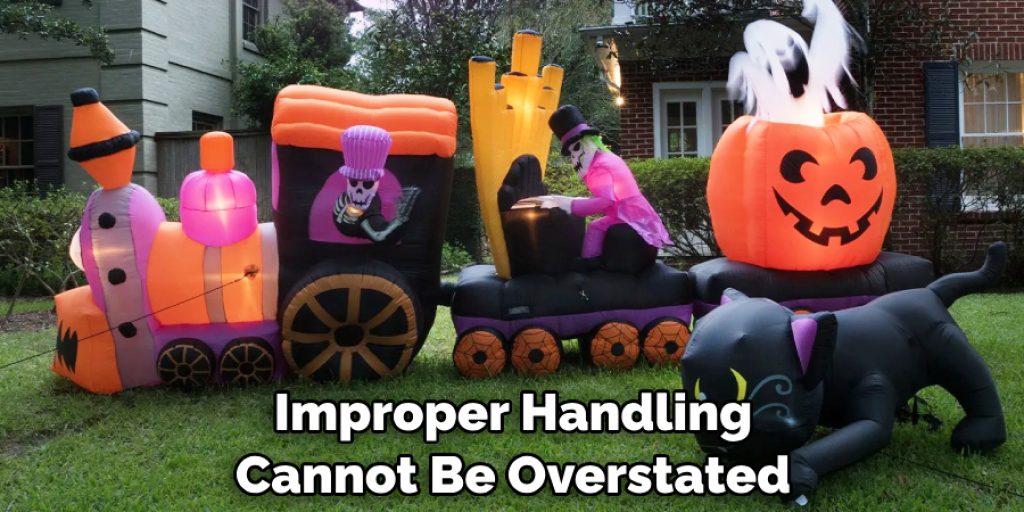
Assessing Your Setup Area
Before the physical setup of inflatable decorations begins, selecting the right location is imperative for your display’s safety and effectiveness. This section will guide you through crucial considerations to ensure your chosen spot maximizes both the visual appeal and stability of your inflatables.
A. Choosing a Suitable Location for Inflatable Decorations
The primary step is to identify a location that enhances the visibility of your inflatable decorations and supports their structural integrity. Open areas without overhead obstructions like tree branches or power lines are ideal. These spaces reduce the risk of damage to the inflatables and ensure they are prominently displayed.
However, the vicinity of the audience should also be considered; while you want the inflatables to be visible, they should not obstruct pathways or create safety hazards for visitors.
B. Considering Factors like Ground Stability and Nearby Obstacles
Ground stability is crucial in ensuring that inflatable decorations remain standing and secure. Soft, muddy, or uneven terrain can affect the anchoring of inflatables, making them prone to tipping over or shifting. Ideally, inflatables should be placed on flat, firm ground to ensure they stay anchored. Additionally, be mindful of nearby obstacles, including buildings, trees, and other structures, that could potentially interfere with the inflatables or pose a risk in windy conditions.
C. Ensuring Access to Power Sources if Needed
Most inflatable decorations require constant inflation, necessitating continuous access to electricity. Assess the proximity of your setup area to power sources. If the location is far from an electrical outlet, consider using extension cords specifically designed for outdoor use or portable generators.
It’s essential to ensure that any cords are safely secured and positioned to prevent tripping hazards or exposure to moisture. Also, consider the number of inflatables being set up and their power requirements to avoid overloading circuits, which can lead to power outages or safety risks.

How to Keep Inflatable Decorations Standing: Basic Setup Techniques
Several effective methods exist to secure your inflatable decorations and ensure they withstand time and weather. Understanding these techniques is key in preventing damage or accidents, enhancing your display’s overall safety and enjoyment.
A. Anchoring Inflatables with Stakes or Weights
The most common and effective way to anchor an inflatable is by using stakes or weights. Using stakes is ideal if your inflatable is set up on grass or soil. Drive the stakes at a 45-degree angle away from the inflatable, ensuring they’re deep enough to hold securely even in windy conditions.
Heavy-duty weights provide a viable alternative for inflatables set up on hard surfaces where stakes cannot be used. It’s essential to use enough weight to hold the inflatable down under various conditions; a general rule of thumb is to use at least 25 pounds of weight per tether point for standard-size decorations.
B. Securing Inflatables with Ropes or Tethers
Ropes or tethers are crucial in providing lateral support to inflatables, preventing them from tilting or blowing away. When using ropes, secure them to the designated tether points on the inflatable and then attach the other end to stakes in the ground or weights on hard surfaces. The positioning of these ropes should form a wide angle to maximize stability, creating a sturdy base that can withstand wind without causing undue stress on the inflatable fabric.
C. Using Sandbags or Water Weights for Stability
For situations where traditional stakes or heavy weights aren’t feasible, sandbags or water weights offer an excellent solution for stabilizing inflatables. These are particularly useful for indoor setups or on surfaces where stakes cannot be used.
Place the sandbags or water weights at the base of the inflatable, ensuring they’re distributed evenly around its perimeter for optimal stability. This method not only secures the inflatable but also keeps it stationary without causing damage to the underlying surface.

Utilizing these basic setup techniques will significantly reduce the risk of your inflatable decorations becoming displaced or damaged. Taking the time to anchor, tether, and stabilize your inflatables correctly can extend their lifespan and ensure they remain a festive and safe part of your celebration or promotional event. Remember, the goal is to enjoy your inflatable decorations with peace of mind, knowing they’re securely anchored and well-maintained.
How to Keep Inflatable Decorations Standing: Reinforcing Inflatable Structures
Inflatable decorations, while visually striking and engaging, require meticulous care and strategic reinforcement to ensure their longevity and safety. Beyond the basic setup techniques, there are advanced methods to fortify inflatables against common issues like sagging, collapse under weight, or damage from environmental factors.
This section dives into effective strategies for reinforcing inflatable structures, ensuring they stand tall and resilient throughout their display period.
A. Adding Internal Support Structures or Frames
Incorporating internal support structures or frames can immensely enhance the structural integrity of large or complex inflatable decorations. These supports, made from lightweight materials such as aluminum or flexible plastic, act as a skeleton within the inflatable, distributing weight evenly and preventing sections from collapsing or deforming.
When designing or selecting inflatables for purchase, consider models that include these internal supports, especially for larger displays meant to withstand various weather conditions.
B. Using Additional Inflation Points for Stability
For particularly large or intricately shaped inflatables, having multiple inflation points can be crucial for maintaining an even air pressure distribution. This approach ensures that all parts of the inflatable are properly supported and remain inflated, even in the case of minor leaks or punctures in one section.
Furthermore, additional inflation points allow for quicker setup and deflation times, facilitating easier management and adjustments as needed. It’s essential to monitor all inflation points regularly to ensure they function correctly and adjust the airflow for optimal stability.
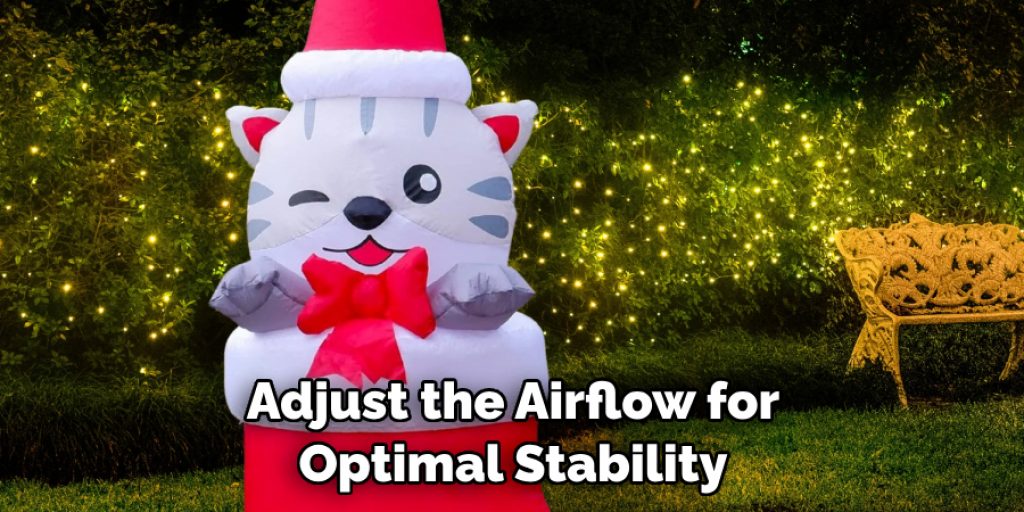
C. Repairing and Reinforcing Weak Spots
Regular inspection of your inflatable decorations can reveal areas prone to stress or wear, such as seams, corners, and areas where fabric meets tether points. Proactively applying patches or adhesive reinforcement tapes to these spots can prevent tears and leaks before they occur. For inflatables already showing signs of wear, applying a specialized inflatable repair glue and a patch made from a similar material as the inflatable ensures a durable fix.
For best results, repairs should be performed in dry, mild conditions to allow adhesives to cure properly. Additionally, reinforcing tether points by sewing or adhering to additional layers of fabric can prevent tears from expanding, ensuring the inflatable’s anchoring system remains secure.
Implementing these reinforcement strategies can significantly improve the durability and safety of inflatable decorations. By adding internal supports, utilizing additional inflation points for even air distribution, and promptly repairing and reinforcing weak spots, you can extend the lifespan of your inflatables and maintain their visual appeal and stability throughout their use.
How to Keep Inflatable Decorations Standing: Windproofing Strategies
Given the susceptibility of inflatable decorations to wind damage, implementing effective windproofing strategies is crucial for their stability and longevity, especially in areas prone to high winds or sudden gusts. This section explores practical approaches to safeguarding inflatables against wind-related threats, ensuring they remain an impressive aspect of any celebration or advertisement without succumbing to the power of the elements.
A. Installing Windbreaks or Barriers Around Inflatables
One of the most effective ways to protect inflatables from strong winds is by using windbreaks or barriers. These can be strategically placed structures such as fences, walls, or even natural barriers like thick bushes or rows of trees, which help deflect wind away from the inflatable.
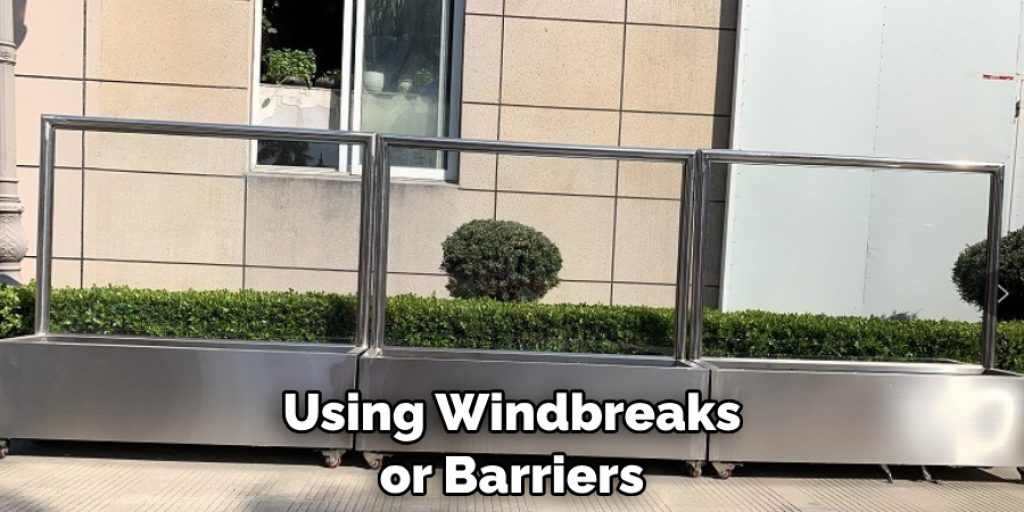
The key is to position these barriers in a manner that disrupts wind flow, reducing its impact without obstructing the visibility of the inflatable. For temporary setups, portable windbreak panels can be used. These should be anchored securely and positioned at a distance that optimally breaks the wind without causing turbulence that could affect the inflatable.
B. Adjusting Inflation Levels to Withstand Wind Pressure
Properly adjusting the inflation level of decorations is a subtle yet effective method for combating wind pressure. In mild to moderate wind conditions, slightly increasing the inflation pressure can help the structure maintain its shape and stability against gusts.
Conversely, slightly deflating the inflatable in strong wind scenarios can reduce the surface area exposed to wind, lowering the risk of damage. It is vital, however, to monitor and adjust these levels carefully, as over-inflation can lead to bursting, while under-inflation may result in improper anchoring or collapse under wind force.
C. Using Wind-Resistant Materials for Construction
The choice of materials in constructing inflatables plays a significant role in their ability to withstand windy conditions. Materials with higher durability and tear resistance, such as ripstop nylon or reinforced PVC, are preferred for their ability to endure the stress caused by fluctuating wind pressures without sustaining damage.
These materials also offer the benefit of being lightweight, which is essential for the practicality of large inflatables. Additionally, incorporating mesh panels or air vents in strategic areas of the inflatable can allow wind to pass through, reducing the overall wind load and minimizing the chance of the inflatable being carried away or torn apart by strong gusts.
By integrating these windproofing strategies—installing windbreaks or barriers, adjusting inflation levels, and using wind-resistant materials—in planning and setting up inflatable decorations, one can significantly enhance resilience against windy conditions. Such measures extend the inflatables’ lifespan and ensure they can be displayed safely and confidently, irrespective of the forecasted wind levels.
Continual assessment and adjustment based on current weather conditions will further safeguard these festive and promotional elements from wind-related incidents, preserving their aesthetic and functional value.
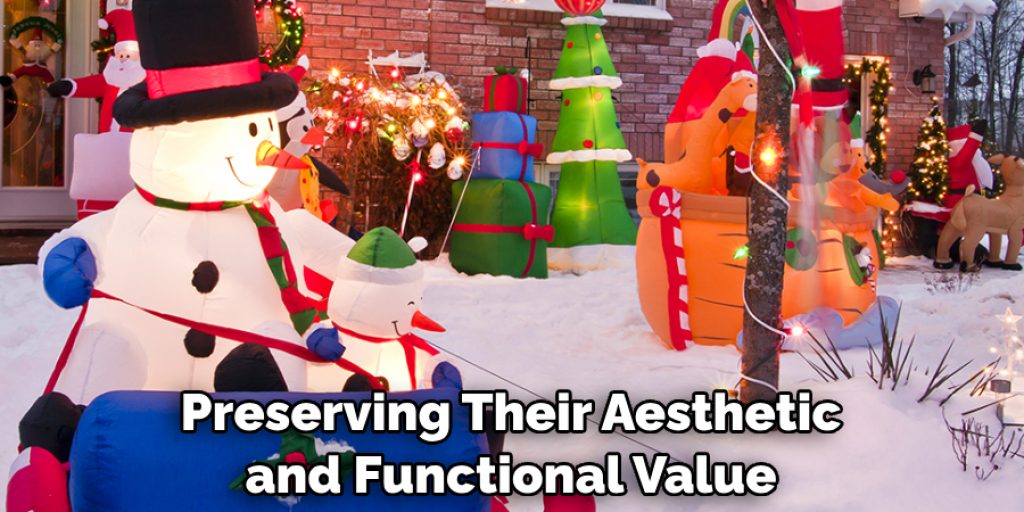
Maintenance and Care Tips
Maintaining inflatable decorations is as vital as their setup and windproofing to ensure they remain pristine for future use. Regular upkeep prolongs their lifespan and helps maintain their aesthetic appeal. This section will cover essential maintenance and care tips, focusing on inspection, cleaning, storage, and prompt repairs.
A. Regularly Inspecting Inflatables for Damage or Wear
Frequent inspections are crucial for early detection of potential issues. Even when inflatables are not in use, it’s wise to perform a detailed check periodically. Look for signs of wear, especially around seams, connections, and stress points. Checking for color fading can also indicate areas exposed to excessive sunlight, which might weaken the material over time. Early detection of these issues allows for timely intervention, preventing minor problems from becoming irreparable damage.
B. Cleaning and Storing Inflatables Properly When Not in Use
Proper cleaning is key to maintaining the visual and structural integrity of inflatables. After deflation, ensure that the surface is free from dirt, debris, and moisture. Using mild soap and water, gently clean the inflatable, paying close attention to remove any stains or buildup. After cleaning, allow the inflatable to dry completely to prevent mold and mildew growth, which can degrade the material and lead to unpleasant odors.
For storage, choose a cool, dry area away from direct sunlight or extreme temperatures, which can cause colors to fade and materials to degrade. Fold the inflatable neatly, avoiding sharp folds that might crease or damage the material. Store it in a protective bag or container to shield it from dust and pests. Proper storage keeps the inflatable in ready-to-use condition and makes future setup quicker and more efficient.
C. Repairing Minor Damages Promptly to Prevent Further Issues
Immediate attention to minor damages, such as small tears or leaks, can prevent them from worsening. Utilize repair kits specifically designed for the material of your inflatable, adhering to the manufacturer’s instructions for the best results.
For tears, applying adhesive patches on both sides of the affected area ensures a stronger repair. A specialized sealant can be applied in case of leaks around inflation points or seams. Always allow any repair to cure as recommended before inflating again to test the effectiveness of the fix.
In conclusion, implementing these maintenance and care tips—regular inspections, thorough cleaning, proper storage, and prompt repairs—significantly contributes to the durability and longevity of inflatable decorations. Maintaining these festive and promotional items in top condition ensures that they can be enjoyed for many seasons, providing cost-effective decoration solutions while minimizing environmental impact through reduced waste.

Innovative Solutions for Unique Challenges
Inflatable decorations face a variety of challenges, from unpredictable weather conditions to the demand for intricate designs. Innovative solutions have been developed to address these concerns, enhancing both functionality and aesthetic appeal.
A. Utilizing Technology like Inflatable Stabilizers or Sensors
Advancements in technology have introduced inflatable stabilizers and sensors as effective tools for enhancing the stability and durability of inflatable decorations. Stabilizers can be strategically placed within inflatables to prevent excessive movement in windy conditions, ensuring the decoration maintains its intended shape and presentation.
On the other hand, sensors monitor changes in weather conditions in real time, automatically adjusting the inflation level or activating internal stabilization mechanisms to counteract the effects of wind. This integration of technology not only increases the inflatable’s resilience but also significantly reduces the need for constant manual adjustments.
B. Collaborating with Professional Installers for Complex Setups
Complex installations often necessitate the skills and experience of professional installers. These experts are equipped with the knowledge and tools to tackle challenges that come with large-scale or intricate designs, ensuring a safe and secure setup.
Collaboration with professionals enables incorporating advanced anchoring systems and structural supports that may not be feasible through DIY methods. This cooperation not only ensures the structural integrity of the installation but also significantly enhances safety for both the public and the decorations themselves.
C. Exploring Alternative Materials or Designs for Inflatable Decorations
Exploring alternative materials and innovative designs represents a forward-thinking approach to inflatable decorations. Materials with enhanced UV resistance improved durability, and eco-friendliness are becoming increasingly popular, catering to the growing demand for sustainable decoration options.
Additionally, experimenting with aerodynamic designs can reduce wind resistance, offering better stability in various weather conditions. Such innovations push the boundaries of what’s possible in decorative inflatables and contribute to their longevity and environmental sustainability.

By employing these innovative solutions, the use of inflatable decorations can overcome unique challenges, offering visually stunning and durable options for various events and celebrations.
Conclusion: Enjoying Stable and Safe Decorations
The quest for the perfect festive or promotional display often leads us to the vibrant and dynamic world of inflatable decorations. Throughout this guide, we’ve explored how to keep inflatable decorations standing, emphasizing the importance of regular maintenance, innovative stabilization techniques, and collaboration with professional installers for elaborate setups. These strategies are pivotal in combating the challenges posed by weather conditions and ensuring the longevity of these eye-catching displays.
Safety and proper maintenance take precedence, serving as the foundation for preserving inflatable decorations’ structural integrity and aesthetic appeal. Owners can significantly extend the life span of their decorations by conducting regular inspections for wear and tear, cleaning and storing items correctly when not in use, and addressing damages promptly. Furthermore, incorporating technological advancements like inflatable stabilizers and weather-responsive sensors plays a crucial role in maintaining stability and safety, even under adverse conditions.
We encourage you to embrace these solutions with enthusiasm and confidence. By adhering to the discussed practices, you can enjoy your inflatable decorations with the peace of mind that comes from knowing they are stable, safe, and captivating. Whether for personal enjoyment or to captivate an audience during public events, these decorations can now be a source of enduring delight and fascination, thanks to the diligence in their upkeep and innovative approaches to their challenges.

